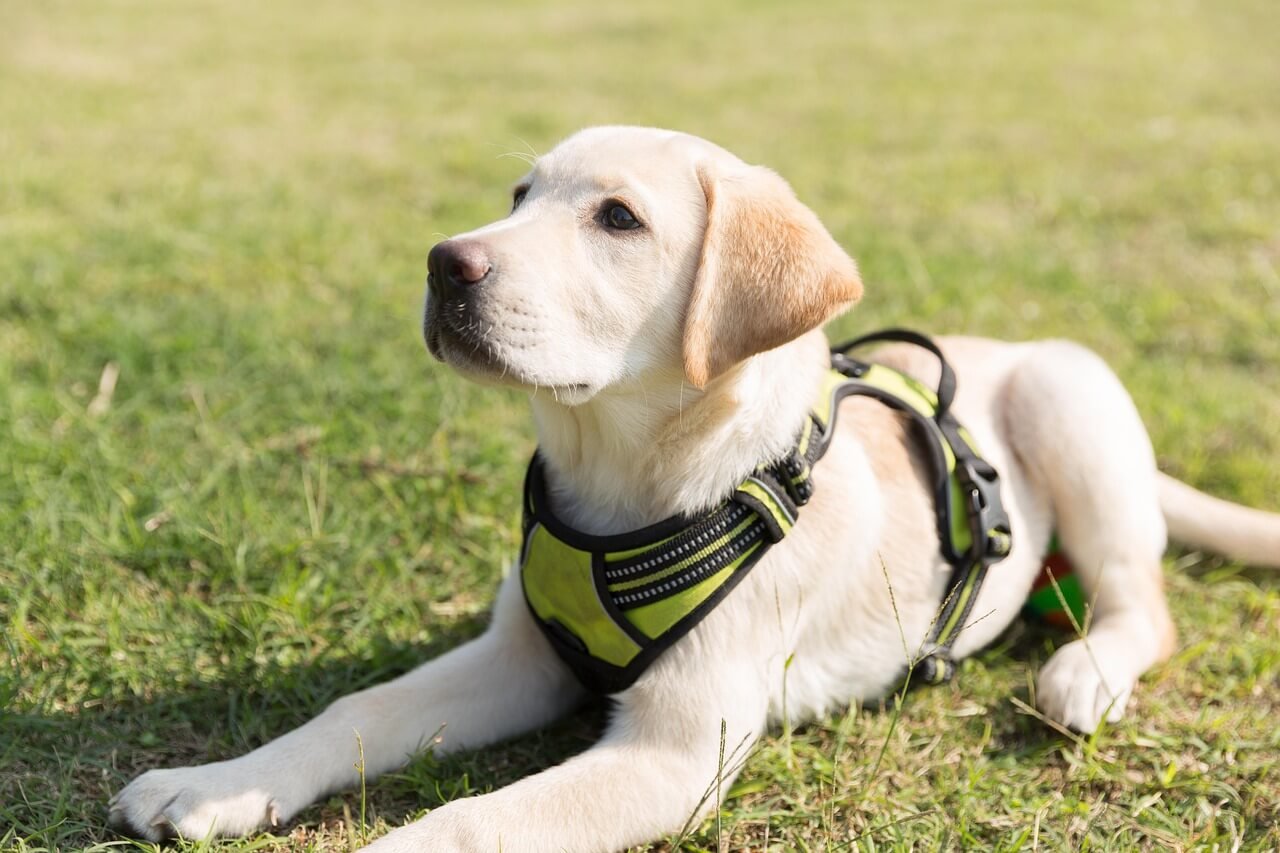Why Does My Dog Hide Under the Bed? Understanding Canine Behavior
Dogs are known for their playful and loyal nature, but sometimes their behavior can leave us scratching our heads. One such puzzling habit is when your furry friend decides to hide under the bed. While it might seem odd or even concerning, this behavior is more common than you think. Whether your dog is a tiny Chihuahua or a large Labrador, hiding under the bed can stem from a variety of reasons. In this blog post, we’ll dive into why dogs exhibit this behavior, explore possible triggers, and provide actionable tips to help you better understand and support your four-legged companion.
Common Reasons Why Dogs Hide Under the Bed
When your dog retreats under the bed, it’s often a sign that they’re responding to something in their environment or their emotional state. Here are some of the most common reasons behind this behavior:
Fear or Anxiety
Many dogs seek shelter under the bed when they feel scared or anxious. Loud noises like thunderstorms, fireworks, or even vacuum cleaners can trigger this response.Stressful Situations
Changes in routine, new visitors, or moving to a new home can overwhelm your dog, prompting them to find a safe space.Illness or Discomfort
If your dog is unwell or experiencing pain, they may hide as a way to cope with their discomfort.Natural Instincts
In the wild, animals often retreat to small, enclosed spaces for safety. Your dog’s hiding behavior might simply be an instinctual response.Overstimulation
Too much excitement or activity in the house can make your dog feel overwhelmed, leading them to seek refuge under the bed.
Understanding these triggers can help you identify why your dog is hiding and take steps to address the root cause. Remember, patience and observation are key to supporting your pet during these moments.
Signs That Your Dog Is Hiding Due to Stress
Not all hiding behaviors are the same, and stress-related hiding often comes with specific signs. If you notice any of the following, it might indicate that your dog is feeling overwhelmed:
Excessive Panting
Panting without physical exertion can be a sign of anxiety or stress.Trembling or Shaking
If your dog is shaking while hiding, it could mean they’re frightened or uncomfortable.Loss of Appetite
Refusing to eat or drink is a red flag that something might be wrong emotionally or physically.Excessive Licking or Chewing
Dogs often lick or chew themselves as a way to self-soothe during stressful times.Avoidance Behavior
If your dog avoids eye contact or interaction, it could signal that they’re feeling stressed or uneasy.
By recognizing these signs early, you can intervene and create a calmer environment for your dog. Addressing stress promptly ensures your pet feels safe and secure in their surroundings.
Check this guide 👉Why Does My Dog Eat Sticks? Best 7 Behavior Tips!
Check this guide 👉Why Does Your Dog Dig in Bed? Best 7 Behavior Tips!
Check this guide 👉Why Is My Dog Gagging? Best 7 Behavior Tips!

Possible Causes | Solutions |
|---|---|
Loud Noises (Thunder, etc.) | Use white noise machines or calming music. |
New Environment | Gradually introduce your dog to the space. |
Illness or Pain | Schedule a vet visit to rule out health issues. |
Overstimulation | Create quiet zones in your home for downtime. |
Fear of Strangers | Socialize your dog slowly and positively. |
How to Create a Safe Space for Your Dog
Providing your dog with a designated safe space can reduce their need to hide under the bed. Here are some practical steps you can take:
Use a Cozy Crate
A crate can serve as a secure den-like area where your dog feels protected.Add Comfort Items
Include soft blankets, toys, and familiar scents to make the space inviting.Choose a Quiet Corner
Place the safe space in a low-traffic area of your home to minimize disturbances.Introduce Calming Scents
Lavender or chamomile sprays can help soothe your dog’s nerves.Respect Their Privacy
Allow your dog to retreat to their safe space whenever they feel the need without interruption.
By creating a comforting environment, you empower your dog to feel secure and confident, reducing their reliance on hiding spots like under the bed.
Tips for Preventing Excessive Hiding Behavior
While occasional hiding is normal, excessive or prolonged hiding can indicate deeper issues. Here are some tips to prevent this behavior from becoming a recurring problem:
Stick to a Routine
Dogs thrive on consistency, so maintaining a predictable schedule can reduce anxiety.Gradual Desensitization
Expose your dog to stressful stimuli gradually, rewarding calm behavior along the way.Positive Reinforcement
Reward your dog with treats or praise when they choose not to hide during triggering situations.Regular Exercise
Physical activity helps burn off excess energy and reduces stress levels.Professional Help
If hiding persists despite your efforts, consider consulting a veterinarian or animal behaviorist.
With these strategies, you can foster a happier and healthier relationship with your dog while minimizing unwanted hiding behaviors.
Understanding Your Dog’s Body Language
A dog’s body language can reveal a lot about their emotional state and help you understand why they might be hiding under the bed. Observing subtle cues can provide valuable insights into your pet’s well-being. Here are some key signs to watch for:
Flattened Ears
Flattened ears often indicate fear or submission, signaling that your dog feels threatened or uncomfortable.Tucked Tail
A tucked tail suggests anxiety or nervousness, showing that your dog may be trying to protect themselves.Wide Eyes with Visible Whites
This expression, known as “whale eye,” can mean your dog is feeling stressed or uneasy.Crouching Posture
A lowered body posture typically indicates fear or an attempt to appear smaller and less noticeable.Yawning or Lip Licking
These behaviors, when unrelated to tiredness or hunger, can be signs of stress or discomfort.
By learning to interpret these signals, you can better respond to your dog’s needs and create a more supportive environment for them.
Toys and Tools to Distract Your Dog
Sometimes, distracting your dog with toys or tools can help redirect their focus and reduce the urge to hide. These items can provide comfort and mental stimulation during stressful moments. Consider the following options:
Interactive Puzzle Toys
Puzzle toys engage your dog’s mind and keep them occupied, helping to alleviate boredom or anxiety.Chew Toys
Chewing is a natural stress-reliever for dogs, making durable chew toys a great distraction tool.Stuffed Animals with Familiar Scents
Toys that carry your scent or the scent of other familiar pets can provide comfort during anxious times.Calming Treats
Treats infused with ingredients like chamomile or CBD oil can help soothe your dog’s nerves.Sound Machines or White Noise Devices
These devices can mask loud or sudden noises, creating a calming auditory environment.
Using these tools strategically can make a significant difference in helping your dog feel more at ease and less inclined to retreat under the bed.
Building Trust Through Positive Reinforcement
Positive reinforcement is a powerful way to build trust and reduce your dog’s reliance on hiding as a coping mechanism. By rewarding calm behavior, you can encourage your dog to feel more confident in their surroundings. Here’s how to implement this approach effectively:
Reward Calm Behavior
Offer treats or praise when your dog remains calm in situations that previously caused them to hide.Use Clicker Training
Clicker training helps mark desired behaviors, reinforcing positive actions with precision.Start Small and Gradual
Expose your dog to triggers in small doses, rewarding them for staying composed throughout the process.Celebrate Small Wins
Acknowledge progress, no matter how minor, to keep your dog motivated and encouraged.Be Consistent
Consistency is key to building trust; ensure everyone in the household follows the same reinforcement strategies.
Through patience and positive reinforcement, you can strengthen your bond with your dog and help them overcome their need to hide under the bed.
FAQ
Is it normal for my dog to hide under the bed?
Yes, it’s a common behavior and often stems from fear, anxiety, or natural instincts.
Should I force my dog out from under the bed?
No, forcing your dog out can increase their stress. Instead, gently encourage them with treats or toys.
What should I do if my dog hides frequently?
Observe their behavior, identify potential triggers, and consult a vet to rule out health issues.
Can hiding indicate illness?
Yes, hiding can sometimes be a sign of pain or discomfort. A vet check-up is recommended if this behavior persists.
How can I make my dog feel safer at home?
Create a designated safe space, maintain a routine, and use calming techniques like soothing music or scents.
Supporting Your Dog Through Understanding and Love
Every dog is unique, and their reasons for hiding under the bed can vary widely. Whether it’s due to fear, stress, or simple instinct, understanding the root cause is crucial to addressing the behavior. By providing a safe and supportive environment, observing your dog’s cues, and seeking professional help when needed, you can ensure your furry friend feels secure and loved. Remember, your patience and empathy go a long way in strengthening the bond you share with your dog. After all, a happy dog means a happy home!
Cuterebra Larvae in Cats: Best 7 Expert Tips! – Expert advice on signs, treatment & prevention of this rare but serious feline parasitic infestation.
Cuterebra Larvae in Dogs: Best 7 Expert Tips! – Expert advice on signs, treatment & prevention of this rare but serious parasitic infestation.
Cat Tumor on Paw: Best 7 Expert Tips! – Expert advice on signs, diagnosis, treatment & care for feline paw tumors.
Panacur Side Effects in Dogs: Best 7 Expert Tips! – Safe usage, common reactions & when to call the vet.





